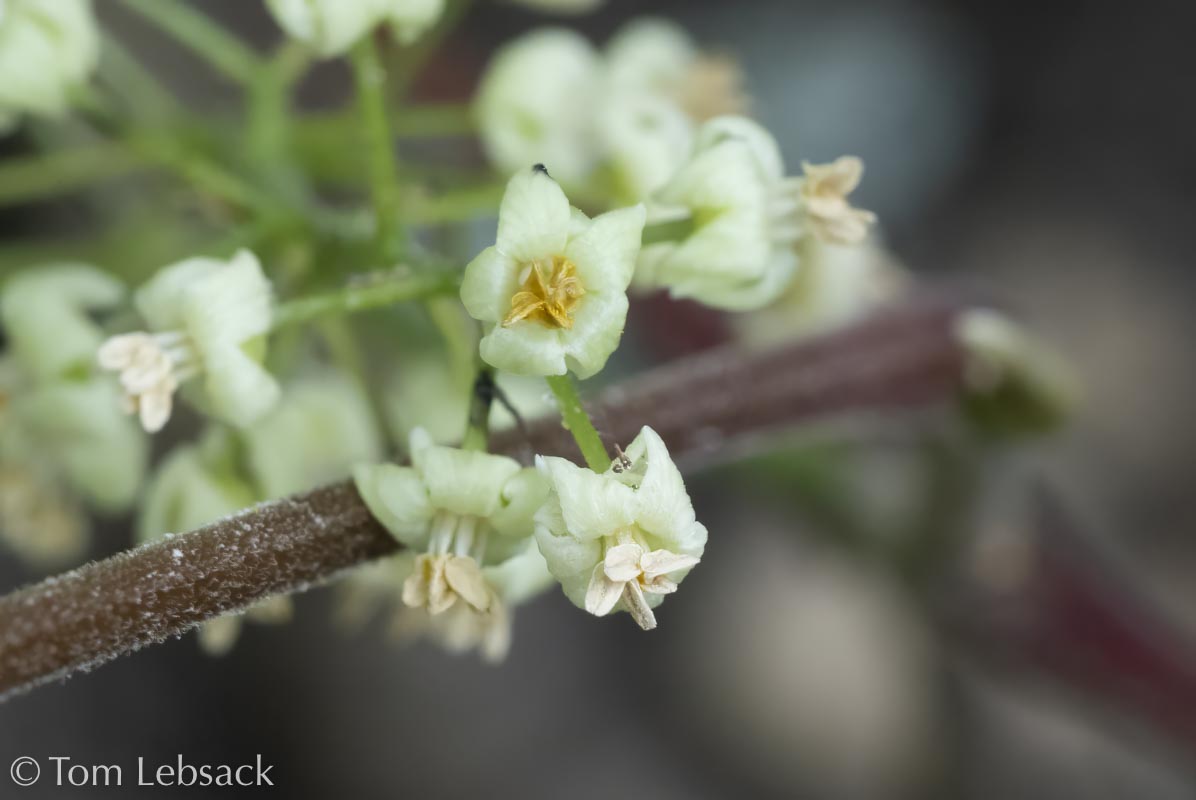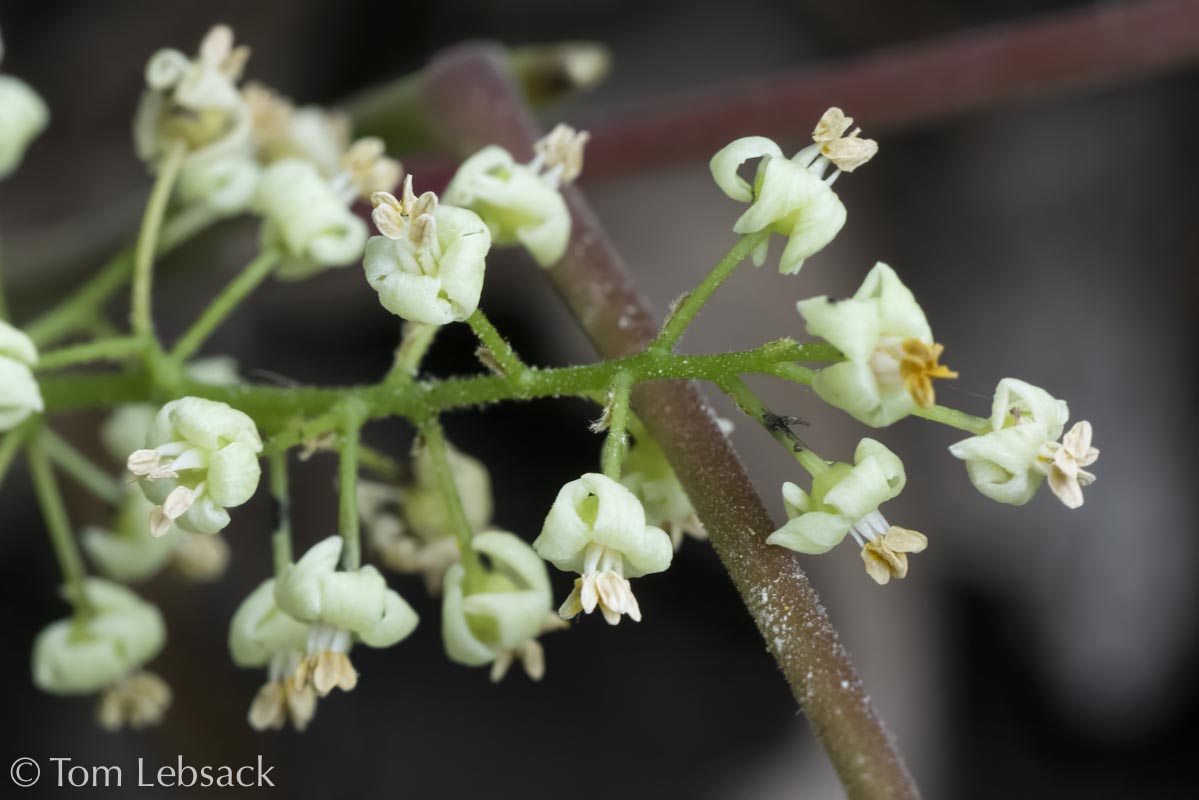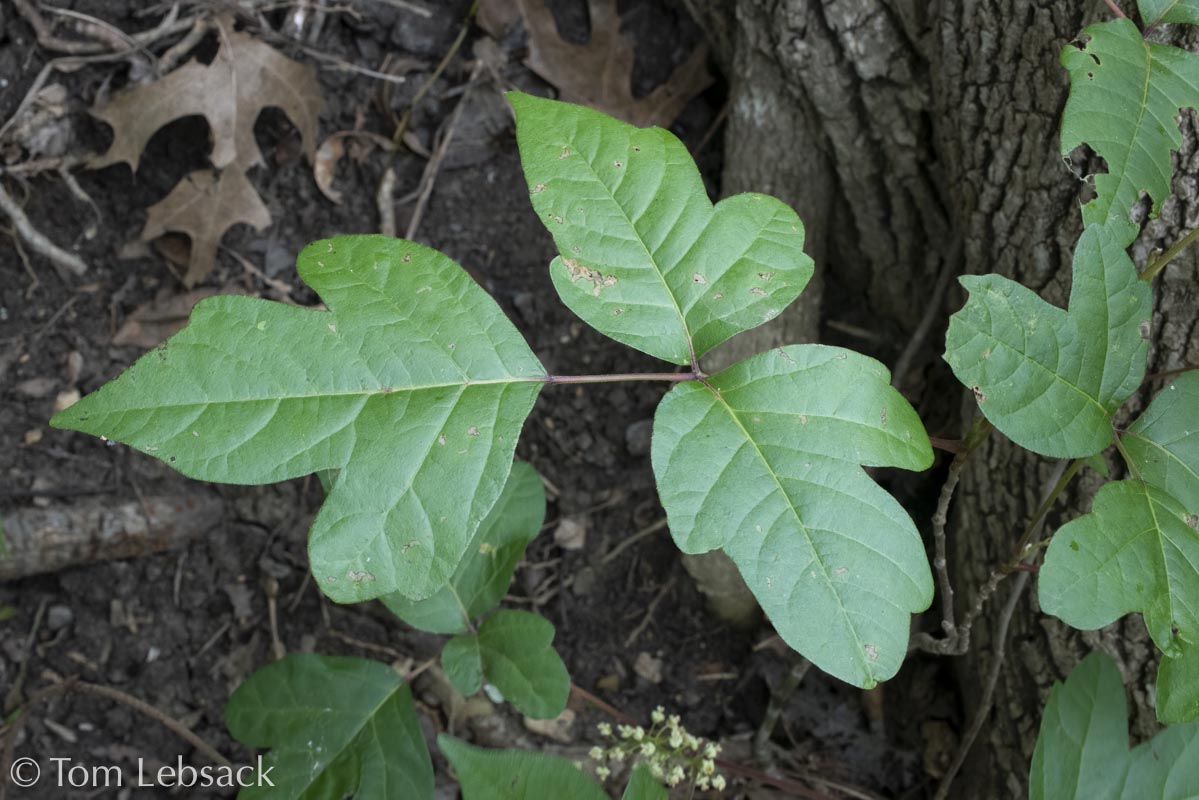Texas Wildbuds
Toxicodendron pubescens
(Atlantic Poison Oak)
| Scientific Name | Toxicodendron pubescens (Rhus toxicodendron var. eximia) | USDA PLANTS Symbol | TOPU2 |
| Common Name | Atlantic Poison Oak, Eastern Poison Oak | ITIS Taxonomic Serial No. | N/A |
| Family | Anacardiacaea (Sumac) | SEINet Reference |
Click Here |
| Description | Habitat: Sandy soils in forests, natural areas, thickets and dry areas in fields. Plant: Suberect shrub, simple or somewhat branched, seldom over 40 inches tall; slender stems, grayish-brown, and smooth or slightly hairy. Leaves: Compound trifoliate leaves tending to crowd the upper parts of the stems, leaflets ovate or rhombic and usually with 2 to 4 blunt or rounded deep teeth or shallow lobes on each side; terminal leaflet is larger (1 to 8 inches long and 1/2-inch to 5 inches wide) and on a petiolule (stalk) up to 1-3/4 inches long; lateral leaflets are somewhat smaller and sessile; deciduous green leaflets become orangish-red in the fall. Inflorescence: Panicles of several to many small, rather inconspicuous flowers less than 1/4-inch across, each with five yellowish-white petals and five stamens. Bloom Period: March and April. Fruit: Tight clusters of greenish-white berries in late spring, becoming tannish-white, each 1/4-inch across. References: "Manual of the Vascular Plants of Texas" by Correll and Johnston, NC State Extension and SEINet. |
BONAP Distribution Map Map Color Key Map Color Key |
Texas Status: Native |
Banner photo of Castilleja indivisa and Lupinus ssp. taken along FM 1323 north of Johnson City, Blanco County
© Tom Lebsack 2025
Every attempt is made to provide accurate, up-to-date, and relevant information, but the completeness or accuracy of any information presented on this website cannot be guaranteed. I use authoritative references to insure high standards of accuracy and review and update the information frequently.


